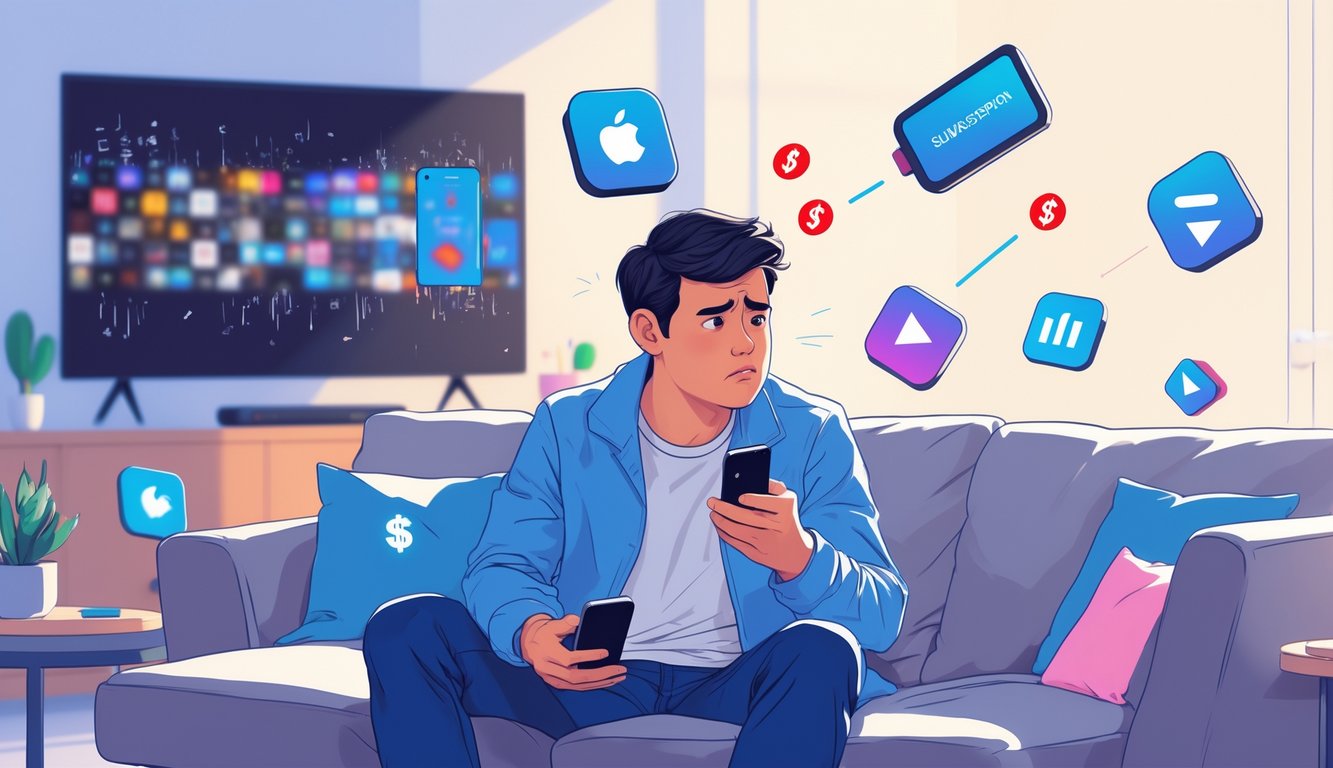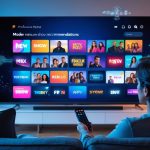
Original Content and Exclusive Shows: Value or Gimmick?
So here’s what drives me nuts: do I really need three subs just to catch all the “must-watch” originals? $7.99 here, $12.99 there, and now my media budget looks like a ransom note. “Exclusive” just means I’m splitting my time and money more ways than ever.
The Role of Exclusive Content in Subscription Costs
Let me guess: Netflix drops a new original, Disney+ teases a Marvel thing, and suddenly I’m juggling passwords again. Data says ad-free plans jumped 25% across the board. Originals are the bait. Some Discovery+ exec told Variety, “Our originals bring sticky loyalty.” Does that mean I’m loyal, or just stuck paying more? I don’t even know. Sometimes originals are huge (Squid Game, obviously), sometimes they’re buried so deep I forget they exist. My cousin canceled HBO Max after a finale, then rejoined three months later. Binge, bail, repeat. The “exclusivity tax” is real, but is it worth it? Not always.
How Media Companies Compete for Market Share
I get it, these platforms want market share. Paramount+, Peacock, Disney+, all of them throwing money at prestige shows. Apple paid $70 million for one season of a series—seriously? That doesn’t even cover the marketing blitz. But a researcher told Marketplace most people don’t stick around just for the next big thing; it’s all churn and return. The dream of “one big library” is dead. Now it’s a patchwork of exclusives, and I can’t even remember which sub I have. Media companies definitely do. Maybe I should just tape my logins to the fridge.
Generational Viewing Trends and Social Media Insights
Streaming fatigue is real—I can’t keep my apps straight or remember the last time a new one felt worth it. Price jumps, random content drops, and the endless scroll for something “actually good” just make me want to give up and doomscroll TikTok. Not nostalgia, just survival.
Gen Z Viewers and Subscription Choices
Okay, so here’s my take: Gen Z and subscriptions? Disaster. Or at least a mess. They churn through streaming services like socks after gym class—one week it’s Netflix, next it’s, I don’t know, Crunchyroll? Deloitte’s Digital Media Trends report (which, yes, I skimmed during lunch) says something like 29% of 18-to-34-year-olds swap out streaming subs every couple months. Not shocking. Streaming bills now look suspiciously like cable, which, let’s be honest, was always a rip-off.
Ads, though? Apparently, Gen Z just shrugs. Sixty-eight percent don’t care about tailored ads as long as they’re not totally irrelevant. I thought everyone was supposed to be freaked out about privacy, but almost half seem fine trading extra data for slightly better recommendations. I mean, who really reads privacy policies anyway? Personalization wins. Morals, eh, maybe next month.
And direct-to-consumer apps? Ugh. Every studio’s got their own thing, so it’s just more clutter. My cousin literally bounced between five apps in two weeks, cursing every login. No one’s happy. But does anyone quit? Not really.
The Influence of Social Media on Streaming Decisions
I waste way too much time on Instagram Reels, and now, honestly, most of the shows I check out? I first saw them on TikTok or some meme. It’s not even subtle anymore. Nielsen’s survey last quarter? Apparently, most 18-24-year-olds hear about new shows through social feeds, not app menus. Remember when “Coming Soon” emails mattered? Yeah, me neither.
Streamers know it, too. Promo campaigns are everywhere, sometimes before a show even drops. Scroll, see a trailer, watch a clip, suddenly you’re convinced you’ll die of FOMO if you don’t subscribe. My digital marketing friend (who I trust, mostly) basically said social platforms are just “conversion engines” now. News about cancellations? I see it on Reddit hours before the official word drops. It’s all so fast and messy.
Honestly, picking what to watch now is just about what pops up in my feed first. Maybe I missed something awesome hiding behind a paywall, or maybe the right hashtag just never hit. Whatever. TikTok’s algorithm runs my viewing life more than my remote ever did. Feels weird, but here we are.
The Future of Streaming Subscription Costs
So, Disney+ and Netflix both jacked up prices last month, and I swear my stomach actually hurt opening those emails. Supposedly, average streaming costs in the US dropped by 23% in 2024 (that’s what Review’s survey claims), but does anyone feel richer? Subscription fatigue is a thing. I mean, there are more streaming options than I have clean shirts, and every year, the price tags get uglier.
Predictions for Subscription Model Evolution
Everyone acts like bundles are some genius new idea. Wasn’t cable just one big bundle? Now I’m juggling Netflix, Max, Hulu, Apple TV+ ad tiers, and they want me to be grateful for “savings.” Deloitte says the average number of video tiers per service is doubling from 2022 to 2024. Streamlining? Please. That’s just more passwords and emails.
Media execs (who probably haven’t logged into anything themselves since 2012) keep insisting price flexibility and ad-supported plans will save us. I’m not buying it. All those CEO statements from Warner Bros. Discovery and Disney? Just PR fluff about “retention.” Lite ad plans, seven-day trials—none of it makes me forget my bill went up. Unused pause features, forgotten subs, paying for Apple TV+ just for Ted Lasso—no one’s fixing this. It’s all just more fragmentation, not less.
Potential for New Business Models
And then there’s the hype for “future-facing” models. TikTok shops, Amazon-style FAST channels—free ad-supported TV—these things pop up everywhere, like those weird mushrooms after rain. Nobody really knows what to do with them. I asked a media consultant last month, and even they admitted people still watch linear TV, which is kind of hilarious.
Microtransactions, hybrid models, “partial library” subs—sure, maybe. But who wants more complicated billing? Most people just want to watch stuff, not manage a spreadsheet. Bundling with Verizon or T-Mobile comes up every year, but I don’t know anyone who actually understands their own phone bill, let alone a media bundle. The real danger? All these “innovations” just make it harder to know what you’re paying for, and you end up more confused than entertained. Tech fixes everything? I’m not convinced.



